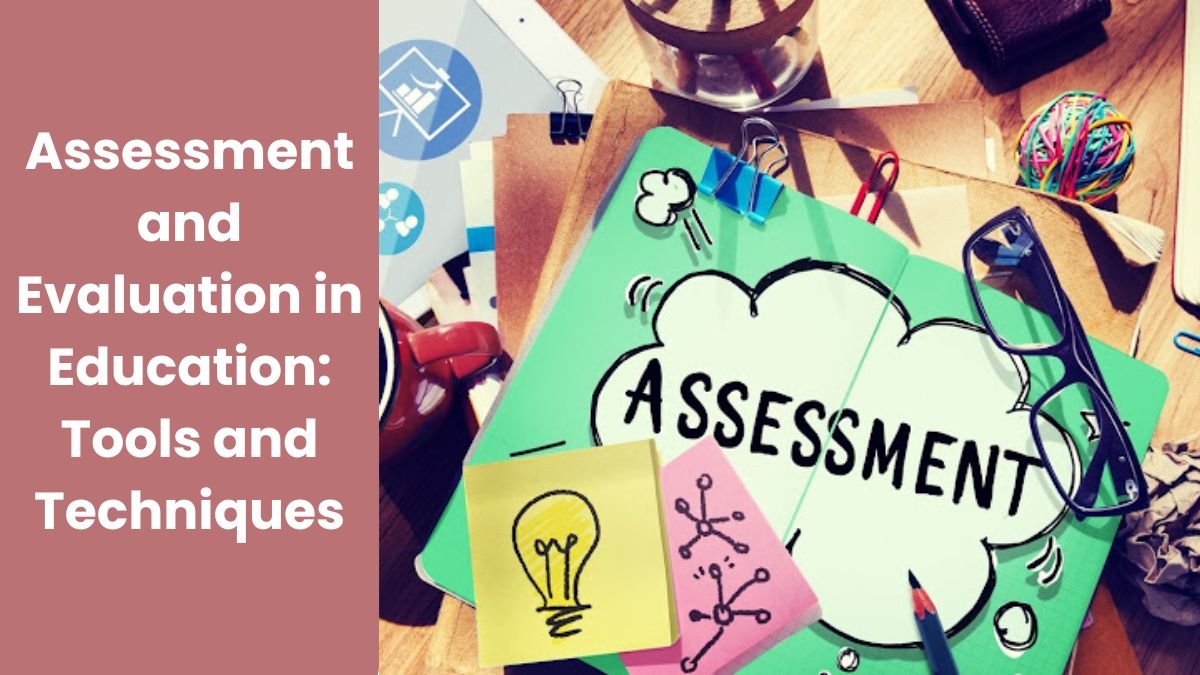Tools and Techniques of Evaluation in Educational Assessment: Evaluation and Tools and Techniques of Evaluation play a very important role in the field of education. Whether it is an attempt to understand the learning of students in the class or to assign grades on the basis of examination – the process of evaluation is a powerful means of making teaching effective.
This subject becomes even more important for CTET, B.Ed. and other teaching training programs because it helps teachers to know how to accurately assess the performance and learning ability of students.
What is evaluation?
Evaluation is a procedure through which quality, appropriateness or effectiveness of a subject, person or project is scrutinized and evaluated. This is not merely a process of awarding marks but the end depended to comprehend overall development and understand it.
It would be interesting to mention that assessment and evaluation are two different terms which supplement one another. There is a thorough evaluation, both quantitative and qualitative evaluations are present.
Major Tools of Evaluation
Checklist
A checklist is a list of predetermined points, in which the points of the activities, qualities or performance of the students are marked. In this, data is collected with the help of tick boxes or comments. This process should be well organized so that the final results are reliable.
Rating Scale
This tool is used to measure the intensity of a particular behavior or characteristic. It has a scale on which the extent of any particular behavior is determined by giving marks between 1 to 5 or 1 to 10.
Questionnaire
A questionnaire is a well-organized instrument of collecting data, consisting of a set of questions or statements. It is usually used as a form of self-reporting and records the student’s thoughts, attitudes or beliefs.
Anecdotal Record
It is a brief but factual description of an important event in the student’s life by the teacher. No opinion is added to it – only the event is recorded that affects the student’s development.
Cumulative Record
It is a sequential record of a student’s entire academic, social, intellectual and physical activities, which is updated over time.
Tests
It is the most common and effective assessment tool. It is divided into three parts:
- Oral
- Written
- Performance-Based
Major Techniques of Evaluation
- Self-Reporting: This technique is a means of obtaining feedback directly from students on their behavior or attitude. This technique uses questionnaires, rating scales or checklists.
- Testing: This is the most common technique of evaluation in which the student’s knowledge, skills, intelligence or interest is measured. Its purpose is to assess students with maximum objectivity in a given situation.
- Observation: This is not just watching, but noting the behavior, activities and reactions of students in an objective manner. If a teacher notes a particular behavior, he records it as objectively as possible.
- Interview: This is a technique of obtaining information through direct conversation with a person. It is used to know the experience, thoughts, beliefs, or feelings of the person.
- Case Study: This is an in-depth study process done on a single student, family, group or institution. Its purpose is to reach the root of the problems of that subject and find a solution.
- Sociometry: This is a technique to measure social relations and social choices of students. It was developed by J.L. Moreno. With this, teachers can understand which students are liked by others or are socially different.
- Projective Techniques: This technique is used to know the personality and subconscious feelings of students. In this, the student is given such scenarios, pictures or situations on which his reactions reflect his inner mindset.
Why is the correct use of evaluation important?
- Helps in understanding: It helps to know what the student has learnt and in which areas improvement is needed.
- Improves the quality of teaching: Teachers can improve their teaching methods.
- Ethical judgement: Assessment makes it possible to make fair and appropriate decisions.
- Holistic development: Not only academic but also emotional, social and ethical aspects of students can be assessed.
Conclusion
All these tools and techniques applied in assessment of learning in education provides the teachers with information to know how far the students have gone in learning and where in which they are deviating and what type of assistance can be given. The process of assessment does not only mean the process of giving marks but is the rebirth of making education effective, sensitive and holistic.
